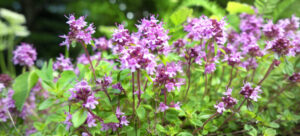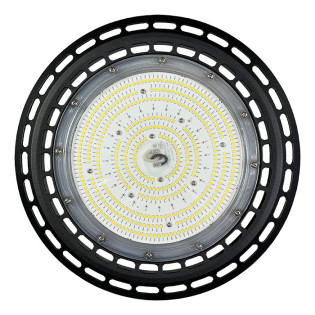
Sufficient lighting is essential for all stages of growth, but sometimes you can overdo it - leading to light stress in plants. This can cause a variety of issues with your plants.
This can get tricky, because you absolutely need intense lighting to produce strong root systems to develop fruits and flowers. From seed to harvest, your plants need light in order to stay healthy.
But when it comes to lighting, there is such a thing as too much of a good thing. Light stress, including high light stress in plants as well as low light stress in plants, can cause serious ill effects.
LIght is one of the most important factors for growing any kind of plant. Get it right in this guide to preventing this condition from occuring in the first place, or treating it if you suspect you may be dealing with it.
What Is Light Stress In Plants?
Plants need light, as you likely know, in order to produce chlorophyll and go through the process of photosynthesis. They need it to survive!

However, when light is either insufficient or is overabundant, it can cause some serious issues with your plants. Believe it or not, you can give your plants too much light in addition to too little.
Light stress can cause a variety of symptoms, from discoloration, legginess, and increased susceptibility to disease.
Can Too Much Light Kill A Plant?
High light stress in plants is typically more common than the lower counterpart. But can too much light kill a plant?
In extreme cases, the high light intensity can cause severe enough damage to your plant that it eventually dies.
It can also dry it out, making it difficult for the plant to undergo photosynthesis and proper growth.
A common mistake that many gardeners make when growing plants indoors is assuming that they will do best with 24 hours of light under a high-intensity grow light.
Most plants benefit from a period of darkness every day, with some plants more photosensitive than others. For instance, poinsettias need darkness in order to bloom.
Stick with an 18/6 photoperiod to be safe, unless you’re using a low intensity light during propagation.
What Are The Two Types Of Light Stress In Plants?

There are two distinct types of light stress in plants - high light stress and low light stress. Knowing the signs of both as well as how to prevent or reverse them are essential when it comes to growing healthy plants.
High Light Stress In Plants
When it comes to high light stress, it’s not necessarily the excess light that’s problematic for your plants but the excess heat energy that is produced. When a plant is subjected to high amounts of light and heat, all the water taken up by the plant is used to cool plant tissues.
If a plant is getting too much light and suffering from high light stress, its leaves may look as though they have burned or simply are falling off. In many cases, the soil will be dry to the touch, too.
High light stress outdoors can be caused by unexpected temperature extremes - when it gets very hot very quickly, plants often aren’t able to respond and therefore become stressed. Indoors, high light stress is typically caused by grow lights being too close to the plants’ canopy.
Often, a simple solution to indoor high light stress is to move your plants further away from the lights. Of course, preventing high light stress by making sure your grow lights are hung at the proper height for the type of plant you are growing (and its stage of growth) is also essential.
Low Light Stress In Plants
Low light stress causes symptoms such as poor leaf growth, yellowing and dropping of leaves, long stems, and a dull green color. A plant suffering from low light stress will often lean toward the closest source of light (like a window), too.
While high light stress damages the parts of the plant that conduct photosynthesis, low light stress limits photosynthetic activity.
Trust us when we say that neither of these conditions are problems you will want to deal with when it comes to your plants! So, let’s take a look at how you can identify it.
What Is The Plant Response To Light Stress?
Plants respond to light stress in several ways.
Typically, when plants do not receive enough light, they are unable to produce chlorophyll. Because of this, they lack the green pigment that makes it possible for them to “green up”. Instead, they become yellow or white in color. This can affect all parts of the plant, including the leaves and stems.
Poor lighting can also cause plants to become leggy. “Legginess” or “stretching” is when a stem becomes long, thin, and feeble, appearing as though it is reaching toward the light source.
In some cases, insufficient light can cause plants to develop too much space between the leaf nodes. Poor lighting can cause plants to drop their leaves or can even cause plants with variegated leaves to develop solid-colored leaves instead.
For plants subjected to extreme light stress - either way too much or way too little - there can be a failure to produce buds. High light stress can cause leaves to look scorched or even bleached, too.
How To Remedy Light Stress In Plants
The first step in treating light stress in your plants is to make sure it doesn’t happen again - you need to rectify the poor lighting conditions that were leading to the stress in the first place.
If you’re growing plants indoors, start by considering how much natural light your environment gets. You need to evaluate both the quality and quantity.
Then, choose plants that have light requirements that match the indoor environment. If you have a low-light environment, you’re not out of luck - there are lots of plants that prefer less lighting.
Fixing Low Light Stress
When low light stress is a factor, consider installing a grow light if you haven't already. Although it can be tempting to place your plants in front of a windowsill, the reality is that plants will grow more slowly without artificial lighting and are also more likely to succumb to overwatering.
If you are already using grow lights and are finding that our plants are struggling with low light stress, move the lights closer to the plants. You can also upgrade your lighting system to one that will provide more adequate light for the type of plants you are growing.
Adequate spacing is another thing that growers neglect to pay attention to. While you might not think it has a major impact on how much light a plant receives, the reality is that closer plant spacing will reduce vegetative growth and fruit size simply because there is more shading going on. Follow spacing recommendations to make sure your plants have room to get all the light they need.
If you’re growing outside, it can be difficult to remedy low light stress conditions without physically moving your plants to a sunnier spot. For plants being grown in containers, this might be simple enough - but for those planted in the ground, it might mean moving or removing obstructions that are in the way (such as cutting down shade trees).
Fixing High Light Stress
If high light stress is your issue, start by moving your plants into a dimmer environment. If growing indoors, that might mean shutting off grow lights or moving plants away from the window.
High light stress can also cause plants to dry out faster so a long drink of water might be in order for your plants! Adding a fan can help cool your plants down, if that’s an issue, but it will dehydrate your plants further so even more water will be needed.
Bear in mind that the younger the plant is, the less light it generally needs. In many cases, seeds will germinate into seedlings with no light at all. Keep the lighting needs of your plants in mind at all stages of growth and adjust as needed to prevent and remedy light stress. In some cases, you may be able to gently bend or angle the plants away from the light.
To protect plants from high light stress, you can use shade cloth. Light-colored silver or white shade cloth is best so it doesn’t radiate more heat down onto the plants.
Final Thoughts On The Plant Response To Light Stress
Light stress can have disastrous effects on your plants but there’s no need to panic. By following the tips we’ve given you above to avoid light stress - and to remedy it, if it occurs - you should be able to get your plants growing well again with your own sanity still intact.
To prevent light stress in the future, consider shopping for the best lighting equipment at Hydrobuilder. We have all the gear you need to help your plants grow well without subjecting them to unnecessary light stress.
Talk about stress-free gardening!


































